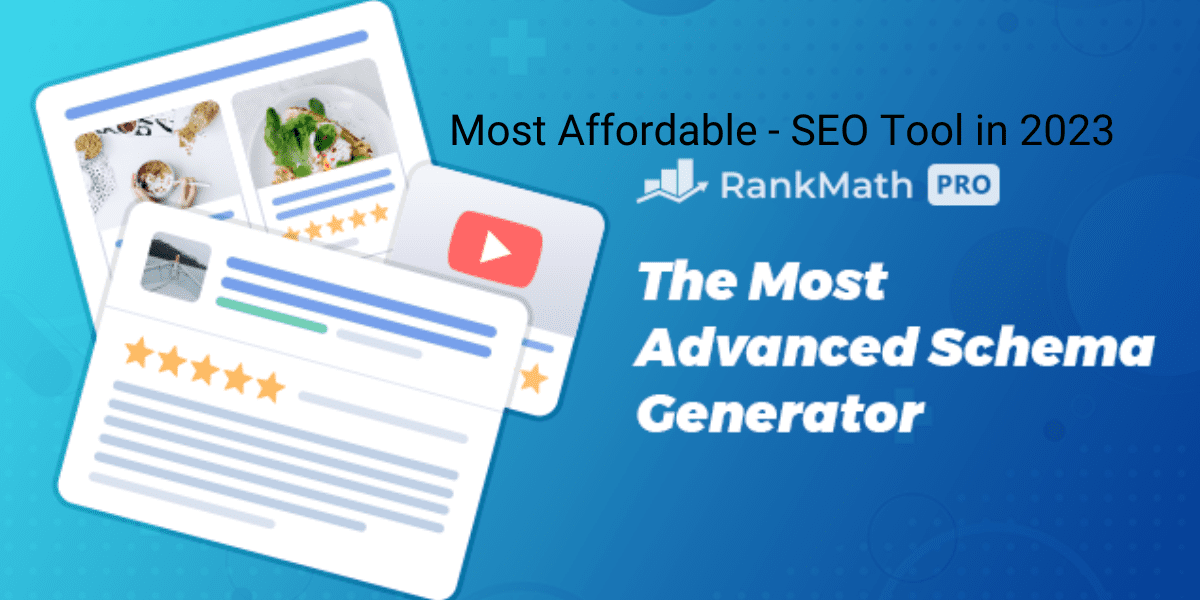Search engine optimization, or SEO, is the process of optimizing your website and content to rank higher in search engine results pages (SERPs). SEO can be an effective way to drive traffic to your website and increase brand visibility. In this blog post, we’ll discuss the advantages and disadvantages of SEO, as well as the pros and cons of different SEO strategies.
Table of Contents
1.Conduct Keyword Research:
Keyword research is the foundation of any effective SEO strategy. Identify relevant keywords and phrases that your target audience is searching for and include them in your website’s content. Use tools like Google’s Keyword Planner to find high-volume and low-competition keywords to target.
For example, if you are selling pet supplies, some relevant keywords may include “dog toys,” “cat food,” and “bird cages.”
2.Optimize Your Website’s On-Page Elements:
On-page optimization involves optimizing your website’s content and technical elements to make it more search engine friendly. Optimize your website’s title tags, meta descriptions, header tags, and content to include relevant keywords.
For example, if you are creating a blog post about dog toys, your title tag could be “10 Best Dog Toys for Active Breeds” and your meta description could be “Find the perfect toys for your active dog with our list of the 10 best dog toys.”
3.Build Quality Backlinks:
Backlinks are an important ranking factor for search engines. Building quality backlinks from reputable sources can help improve your website’s authority and increase its visibility in search results.
For example, if you are a pet supplies store, you could reach out to pet bloggers and ask them to link to your website in their blog posts. You could also create valuable content, such as infographics or videos, that other websites are likely to link to.
4.Optimize for Local Search:
If you have a local business, it’s important to optimize your website for local search. Include your business’s name, address, and phone number on your website and in local directories.
For example, if you own a pet store in New York City, you could optimize your website’s content for keywords like “pet store NYC” and “dog food delivery New York.”
5.Improve Your Website’s Loading Speed:
Website loading speed is a ranking factor for search engines, as well as a user experience factor. Improve your website’s loading speed by optimizing images, minimizing HTTP requests, and using a content delivery network (CDN).
For example, if your website takes too long to load, visitors may leave before they have a chance to view your content or make a purchase.
6.Use Social Media to Promote Your Content:
Social media can be a powerful tool for promoting your website’s content and driving traffic. Share your blog posts and product pages on social media platforms like Facebook, Twitter, and Instagram.
For example, if you have a new product that you want to promote, you could create a social media post that highlights its features and includes a link to your website.
7.Monitor Your Website’s Analytics:
Use analytics tools like Google Analytics to monitor your website’s traffic and track the success of your SEO efforts. Analyze which keywords and pages are driving the most traffic and adjust your strategy accordingly.
For example, if you notice that a particular blog post is driving a lot of traffic to your website, you could create similar content to attract more visitors.
8.Use Internal Linking:
Internal linking is the practice of linking to other pages within your website. This helps search engines understand the hierarchy of your website and improves navigation for users. Use descriptive anchor text that includes relevant keywords.
For example, if you have a blog post about dog toys, you could link to your product page for dog toys using anchor text like “best dog toys for your furry friend.”
9.Optimize Your Website for Mobile:
Mobile optimization is crucial for SEO, as more and more users are accessing websites on their mobile devices. Make sure your website is mobile-friendly and loads quickly on mobile devices.
For example, you can use Google’s Mobile-Friendly Test tool to check if your website is mobile-friendly.
10.Write High-Quality Content:
High-quality content that provides value to users is essential for SEO. Write detailed, informative content that answers users’ questions and includes relevant keywords.
For example, if you have a blog post about dog food, you could write a detailed guide on how to choose the best dog food for your pet.
11.Use Structured Data:
Structured data helps search engines understand the content of your website and improve your website’s appearance in search results. Use structured data markup, such as schema.org, to provide additional information about your website’s content.
For example, if you have a recipe website, you could use recipe schema markup to provide information about the ingredients and cooking time for each recipe.
12.Optimize Your Images:
Optimize your website’s images by using descriptive filenames, alt tags, and captions. This helps search engines understand the content of your images and improves your website’s accessibility.
For example, if you have an image of a dog toy, you could use a descriptive filename like “best-dog-toy.jpg” and an alt tag like “a blue dog toy for active breeds.”
13.Monitor Your Competitors:
Monitor your competitors’ SEO efforts to stay ahead of the competition. Analyze their keyword targeting, content strategy, and backlink profile to identify areas for improvement.
For example, if you notice that a competitor is ranking higher than you for a particular keyword, you could analyze their content and backlinks to see how you can improve your own SEO strategy.
14.Use Social Proof:
Social proof, such as customer reviews and testimonials, can improve your website’s credibility and increase conversions. Encourage customers to leave reviews on your website and on third-party review sites.
For example, if you have a pet supplies store, you could display customer reviews and ratings for each product on your website.
15.Stay Up-to-Date with SEO Trends:
SEO is constantly evolving, and staying up-to-date with the latest trends and best practices is essential for success. Follow industry blogs and attend SEO conferences to stay informed.
For example, you could follow industry leaders on social media or attend conferences like the annual MozCon to learn about the latest SEO trends and strategies.
Advantages of SEO:
Increased website traffic:
By optimizing your website and content for search engines, you can increase your visibility and attract more visitors to your site.
Better user experience:
SEO can improve the user experience by making your website more user-friendly and easier to navigate.
Increased brand awareness:
SEO can help you build brand awareness by increasing your visibility in search results and making it easier for people to find your website.
Long-term results:
SEO is a long-term strategy that can provide sustained results over time.
Cost-effective:
Compared to other forms of digital marketing, such as paid advertising, SEO can be a cost-effective way to drive traffic to your website.
Disadvantages:
Time-consuming:
SEO can be a time-consuming process that requires ongoing effort and attention.
Complexity:
SEO can be complex, and it requires a thorough understanding of search engine algorithms and best practices.
Results are not guaranteed:
SEO does not guarantee results, and it can be difficult to predict when or if your efforts will pay off.
Dependence on search engines:
SEO is dependent on search engines, and changes to search algorithms can impact your rankings.
Pros and Cons of Different Strategies:
On-page optimization:
On-page optimization involves optimizing individual web pages for specific keywords and phrases. Pros of on-page optimization include increased relevance and better user experience. Cons include a narrow focus and limited impact.
Off-page optimization:
Off-page optimization involves building backlinks to your website from other sites. Pros of off-page optimization include increased authority and credibility. Cons include the difficulty of acquiring high-quality backlinks.
Technical:
Technical SEO involves optimizing your website’s technical infrastructure, such as page speed and mobile-friendliness. Pros of technical SEO include improved user experience and increased crawlability. Cons include the complexity and technical expertise required.
Local:
Local SEO involves optimizing your website for local search results. Pros of local SEO include increased visibility and traffic from local customers. Cons include the difficulty of ranking for competitive local keywords.
Comparison with other digital marketing strategies:
Paid advertising:
Paid advertising can provide immediate results, but it can be expensive and less sustainable than SEO.
Social media marketing:
Social media marketing can be a cost-effective way to build brand awareness and engage with customers, but it may not drive as much traffic to your website as SEO.
Email marketing:
Email marketing can be an effective way to nurture leads and drive conversions, but it may not be as effective for driving website traffic as SEO.
For whom SEO is suitable:
SEO can be suitable for businesses of all sizes and industries, as well as individuals who want to build their personal brand online. SEO is particularly well-suited for businesses with a strong online presence and a focus on long-term growth and sustainability.
Conclusion:
SEO can be an effective way to drive traffic to your website and increase brand visibility. However, it requires ongoing effort and attention, and results are not guaranteed. By understanding the advantages and disadvantages of different SEO strategies and how they compare to other digital marketing strategies, you can determine whether SEO is right for your business or personal brand.





